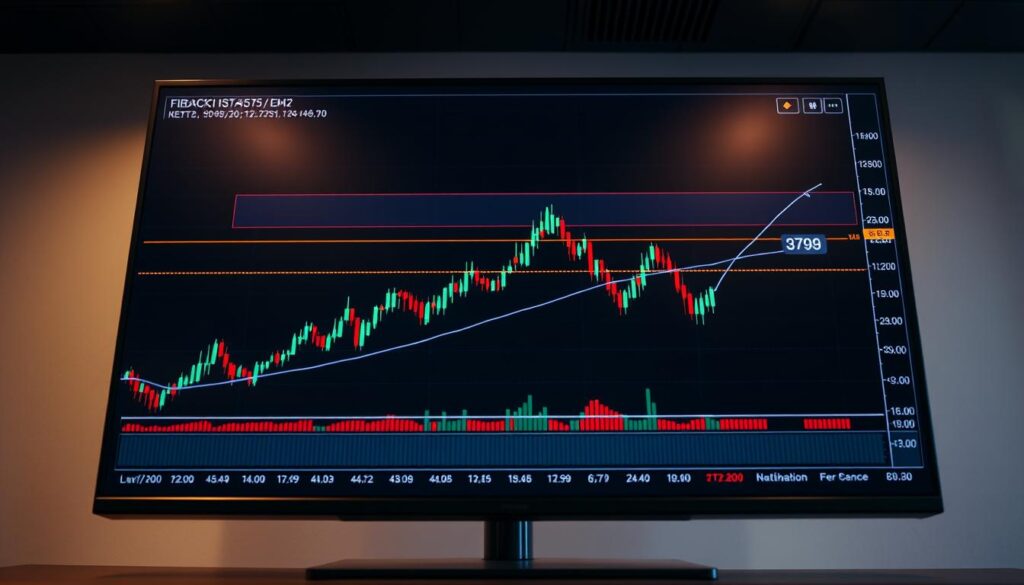Now Reading: Understanding Interest Rate Crypto Market Correlation
- 01
Understanding Interest Rate Crypto Market Correlation
Understanding Interest Rate Crypto Market Correlation

Central banks, like the Federal Reserve, set the cost of borrowing money. This cost is a powerful tool for guiding the economy. When these costs are low, borrowing becomes cheaper. This often encourages spending and investment.
This dynamic has a major effect on financial trends. It influences where people and institutions choose to put their money. Digital currencies are often seen as speculative holdings. Their value can be sensitive to changes in the broader economic climate.
When traditional investments offer higher returns, funds might flow away from riskier digital assets. Conversely, a low-cost environment can spark a “risk-on” attitude. This often benefits alternative investments. Understanding how interest rates impact crypto prices is crucial for modern investors.
This connection between central bank policy and digital asset values is complex. It involves liquidity, investor sentiment, and global capital flows. Grasping this relationship provides a significant advantage in navigating the markets.
Introduction to Interest Rates and Their Role in Crypto Markets
The availability of capital hinges on decisions made by financial stewards. These decisions create the foundation for all economic activity. They influence how people and businesses access funds for growth and investment.
Defining Interest Rates in Traditional and Digital Finance
At its core, the cost of borrowing money is a primary lever for managing an economy. A central bank adjusts this cost to either stimulate or cool down activity.
When this cost is low, accessing funds becomes cheaper. This encourages spending and investment, expanding the money supply. However, this can also lead to increased inflation.
The Federal Reserve and Its Influence on Market Liquidity
In the United States, the Federal Reserve sets a key benchmark. This benchmark affects all other costs throughout the financial system.
Lower costs boost liquidity and push investors toward assets with higher potential returns. This dynamic impacts all markets, including those for digital assets. Even assets outside traditional systems feel the effect of these policy shifts.
When the cost of money rises, the flow of capital changes. Investors often seek safer options, altering the landscape for speculative holdings.
Interest rate crypto market correlation: An Overview
Monetary policy adjustments by financial institutions fundamentally reshape capital allocation patterns. These changes create a direct link between traditional finance and digital holdings.
When central banks increase borrowing costs, investment strategies undergo significant transformation. Safer options like government bonds become more attractive compared to volatile digital holdings.
How Rate Hikes Shift Investment Strategies
Higher costs for money create a “risk-off” environment. Capital tends to move away from speculative digital assets toward more stable alternatives.
This dynamic affects all participants in the financial ecosystem. The availability of credit becomes tighter, impacting leveraged positions in various holdings.
Even though digital currencies operate outside traditional banking systems, they cannot escape broader economic influences. Policy decisions by financial authorities control liquidity conditions that affect all investment classes.
Monitoring these policy trends provides crucial insight for portfolio management. Understanding how interest rates affect different holdings helps with risk assessment and strategic positioning.
Impact of Changing Interest Rates on Cryptocurrency Prices
When borrowing costs shift, the entire investment landscape transforms. This affects speculative holdings like digital currencies. The relationship between monetary policy and digital asset valuations is direct and powerful.

Effects of a Low-Interest-Rate Environment on Crypto
Cheap money creates ideal conditions for digital asset growth. Investors seek higher returns when traditional options offer little. This search for yield drives capital toward volatile holdings.
During 2020, central banks cut costs to near zero. Bitcoin surged from $4,000 to $29,000 in less than a year. Lower rates make government bonds less attractive, pushing money toward alternative investments.
The opportunity cost of holding non-yielding assets decreases significantly. This mechanism explains why digital currencies often thrive during periods of loose monetary policy.
Consequences of Rising Interest Rates on Digital Assets
When central banks increase borrowing costs, the dynamic reverses. Higher rates make safe investments more appealing. Capital flows away from speculative holdings toward stable alternatives.
In 2022, aggressive Federal Reserve action demonstrated this effect clearly. Bitcoin dropped from $47,000 to under $20,000 as rates climbed. Tighter liquidity conditions reduce risk appetite across financial markets.
Traders must monitor policy announcements closely. These decisions can trigger major price movements across all digital holdings.
Institutional Investment, Liquidity, and Market Sentiment
The flow of capital from major financial players now plays a defining role in digital asset valuations. Hedge funds and asset management firms have integrated these holdings into their core strategies.
Their decisions, sensitive to policy shifts, directly impact overall liquidity and collective psychology.
Shifts from Traditional Bonds to Risk-on Digital Assets
When the cost of capital is low, institutions hunt for superior returns. Traditional options like bonds offer minimal yield.
This environment pushes substantial capital into the digital sector. Bitcoin, seen as a high-growth asset and potential inflation buffer, attracts significant attention.

How Borrowing Costs Affect Crypto Market Dynamics
Cheap credit empowers traders to use leverage. They borrow funds to amplify their positions in various digital holdings.
This creates extra demand and can drive prices higher. When borrowing costs rise, this dynamic reverses sharply.
Credit becomes less available and more expensive. Leveraged positions are often unwound, adding selling pressure.
This shift in the cost of capital alters risk appetite almost instantly.
Historical Trends: Case Studies from Recent Market Cycles
Examining past economic cycles provides concrete evidence of how central bank decisions impact alternative investments. Specific periods show clear cause-and-effect relationships that help investors anticipate future movements.
The 2021 Digital Asset Boom Amid Cheap Money
Throughout 2021, the federal reserve maintained historically low borrowing costs. This environment created abundant cheap capital that flowed into digital holdings.
Bitcoin surged dramatically as investors sought assets that could withstand potential inflation. The search for yield during this period pushed prices to unprecedented levels across various digital currencies.

Many participants viewed these assets as modern alternatives to traditional stores of value. This sentiment gained strength as stimulus measures flooded the economy with liquidity.
Lessons from the 2022 Market Correction and Policy Shifts
In 2022, central banks implemented aggressive hikes to combat rising price pressures. This reversal in monetary policy triggered significant capital rotation.
Higher yields on government bonds attracted funds away from speculative positions. The resulting sell-off demonstrated how sensitive digital holdings are to changes in borrowing costs.
This period exposed the dangers of excessive leverage during times of loose policy. The rapid tightening caught many market participants unprepared, leading to substantial price declines.
These historical trends consistently show that accommodative conditions benefit alternative assets while tightening cycles create headwinds.
Navigating Crypto Investments in a Dynamic Rate Environment
Investors who understand policy shifts can position their portfolios advantageously. Staying informed about Federal Reserve announcements provides crucial signals for anticipating movements. This awareness helps time major allocation changes effectively.

Strategies for Adapting to Rate Changes
When borrowing costs rise, reducing exposure to speculative tokens becomes essential. Established digital currencies like Bitcoin often show greater resilience. Their fixed supply and distinct monetary policy help them weather downturns.
During accommodative periods, increasing allocation to quality assets can capture growth. Monitor crypto lending platforms for changing yield opportunities. These platforms reflect current money supply conditions.
Risk Management and Long-Term Value Preservation
Diversification across different asset categories protects against policy-driven volatility. Maintain cash reserves to capitalize on price dislocations. This approach preserves capital during tightening cycles.
High-cost environments naturally filter out unsustainable ventures. Surviving projects often emerge stronger with practical use cases. Focus on fundamentally sound digital holdings for lasting value.
| Policy Environment | Recommended Action | Asset Focus | Risk Level |
|---|---|---|---|
| Low Borrowing Costs | Increase Exposure | Growth-Oriented Tokens | Moderate-High |
| Rising Costs | Reduce Risk | Established Currencies | Low-Moderate |
| High Costs | Selective Buying | Fundamentally Strong Assets | Low |
Recognizing the cyclical nature of monetary policy allows for strategic positioning. Adjust allocations rather than maintaining static portfolios. This dynamic approach maximizes returns across different economic conditions.
Conclusion
Navigating the digital currency landscape requires acute awareness of broader economic policy shifts. The decisions made by financial authorities fundamentally influence capital allocation across all asset classes.
When borrowing costs decrease, liquidity flows toward alternative investments seeking higher returns. Conversely, tightening monetary policy typically redirects funds toward safer options. This dynamic underscores why investors must monitor central bank announcements closely.
While established digital assets may demonstrate resilience during challenging periods, the entire ecosystem remains sensitive to credit conditions. Staying informed about macroeconomic trends provides crucial foresight for strategic positioning.
Successful participation in this evolving space demands integrating traditional financial analysis with digital asset knowledge. This comprehensive approach empowers investors to make informed decisions regardless of the prevailing policy environment.















